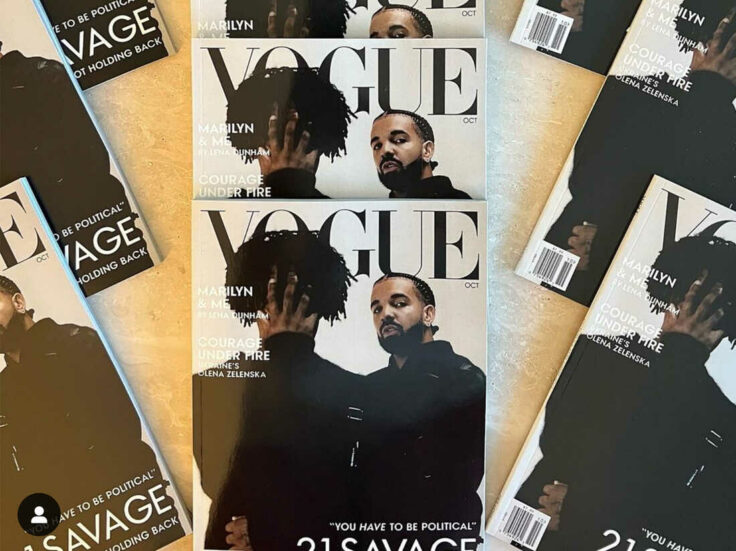This week, Tina Cavalleri and Mark Glinoga, two Californian shoppers, filed an “anti-trust” lawsuit against French luxury label Hermès over claims that its Birkin business model is “unfair.” While Hermès has long been synonymous with sophistication, elegance, and most importantly exclusivity, the plaintiffs are arguing that some of the brand’s practices are leaving some customers out in the cold by tacitly coercing them into a costly shopping spree just to get their hands on the much-coveted bag.
According to the litigants, the duo declared having spent “tens of thousands of dollars” at a certified boutique, before being told that Birkin bags are reserved for “clients who have been consistent in supporting [the brand’s] business.” To help push their request, they were told to “purchase other items and accessories,” to boost their chances— a claim that Hermès has previously denied on multiple occasions.With this information in mind, the class-action suit still states that “although Hermès Sales Associates receive no commission on the most valuable and sought-after products sold by their employer,” they would reportedly be instructed to use Birkin handbags as leverage to compel consumers into buying additional products, for which retail staff receives a supposed 3% commission— an implied strategy Cavalleri and Glinoga believe incentivizes retailers to prioritize the sale of these supplementary items over the genuine needs and preferences of customers.
“The tying product, the Birkin Handbags, is separate and distinct from the tied products, the ancillary products required to be purchased by consumers,” the document continues, adding that “Plaintiffs have alternative options for the ancillary products and would prefer to choose among them independently from their decision to purchase Birkin handbags.”
In what can only be described as a sartorial game of monopoly— where the most financially comfortable always gets to take all— Hermès’ alleged “tying” tactic leaves shoppers feeling less like patrons of haute couture and more like players in a rigged casino, constantly gambling against the odds while the house always wins.
This is not the first time that a major fashion brand or company has found itself involved in a legal entanglement. Below, some of the most bizarre and random class-action lawsuits in fashion.
Temu V. Shein
E-commerce platform Temu has leveled accusations against fast-fashion titan Shein, alleging underhanded tactics aimed at stifling competition. This legal skirmish marks just the most recent chapter in the ongoing feud between the two Chinese rivals, who have battled it out in court several times. The latest is a sprawling 100-page legal filing lodged on Dec. 13 in a federal court in Washington D.C., Whaleco Inc., operating as Temu in the U.S., contends that Shein has engaged in coercive practices akin to the mafia, including intimidating suppliers by summoning them to its headquarters, detaining merchant representatives without cause, confiscating their devices, and issuing threats of reprisal for conducting business with Temu.
Alexi Parmer V. Donald Trump
Jamaica-born Alexia Palmer entered the edge-cutting world of modeling under the wing of none other than Donald Trump’s agency at the tender age of 17. However, her dreams quickly turned sour as she alleged being treated “like a slave” by the business mogul’s agency, claiming visa exploitation and government fraud. Despite her contract promising a hefty wage of $75,000 per annum, Palmer reportedly received a meager $4,985 over three grueling years. “That’s what slavery people do,” she lamented to ABC News in an interview before highlighting the stark disparity between promised riches and the harsh reality of the ground.
Louboutin V. YSL
In a legal showdown fit for the runway, Christian Louboutin faced off against Saint Laurent over the trademark of their iconic red soles in 2012. Back then, the iconic French shoe-wear label made an official legal request, soliciting YSL to stop treading on their territory by adorning their own shoes with red soles — a distinctive element of Louboutin’s visual identity. Unfortunately for them, a judge rejected the injunction request as it all boiled down to a legal technicality: while Louboutin’s trademark soles were deemed protectable, the exception was when the shoe itself was red, giving Saint Laurent a green light to produce and peddle their crimson-bottomed heels.
Drake and 21 Savage V. Condé Nast
Last year, rappers Drake and 21 Savage were sued by media giant Condé Nast over their use of a fake Vogue magazine cover to promote their chart-topping joint album Her Loss. The bogus magazine was professionally reprinted and handed out in multiple North American cities, leveraging “Vogue’s reputation for their own commercial purposes and, in the process, confused audiences who trust Vogue as the authoritative voice on fashion and culture,” as per a statement from Condé Nast general counsel William Bowes. Parties of the now-settled lawsuit came to an agreement that included a permanent injunction barring any further use of Condé Nast’s Vogue trademarks, as well as an undisclosed payment from Drake and 21 Savage. Drake shared the fake cover in a since-deleted Instagram post, writing, “Me and my brother on newsstands tomorrow!! Thanks @voguemagazine and Anna Wintour for the love and support on this historic moment.”
Hailey Clauson’s Parents V. Urban Outfitters
Hailey Clauson’s rise to fame in the realm of fashion often sparks both admiration and controversy. Discovered at the age of 14, the teenager quickly caught the attention of Vogue, posing for the iconic magazine in 2009 for its Russian iteration. Yet, US-clothing company Urban Outfitters stirred the pot by stocking unauthorized T-shirts featuring Clauson’s image— at the time 15— prompting the understandably incensed parents of the young model to file a $28 million lawsuit from her understandably incensed parents, alleging they had used a “blatantly salacious” photo of her on an item without permission or consent. Although judges ruled that Clauson had shown sufficient cause that Urban Outfitters used her image in violation of the New York Civil Rights Law, one can only wonder why pictures of an underage girl were taken in the first place.
Puma V. Dolce & Gabbana
Puma pounced on Dolce & Gabbana over slippers boasting a mink fur strap, claiming they knocked the design off from their collab with American hitmaker Rihanna, which also had a strap, but in faux fur. Dolce & Gabbana countered, arguing their real mink fur, and subsequent expensive price tag, were intended for an upscale clientele and designed for a completely different target group. Looking back, Puma might have reconsidered their legal action had they known that at the time of the affair, the defendants of the case had only sold three pairs of the slippers, two of which were bought by test buyers from Puma, per Munich high regional court where the lawsuit was filed.









